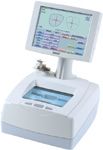Article
In-office versus wholesale labs
Author(s):
As more and more ophthalmologists choose to provide full-service patient care, including eyewear dispensing, the relevant and growing complexities to the choice between an in-office edging lab approach versus an off-site, wholesale finishing lab solution have become increasingly important.

Breakthroughs in coatings, lens material base, and substrate technology provide patients with greater visual acuity and comfort than ever before. The introduction, acceptance, and widespread use of new materials-such as Trivex, super-hyrdophobic, and anti-reflective coatings-and innovative lens-fabrication processes-such as digital surfacing-evidence this trend.

Advancements in technologies-such as the "trace-and-transmit" method-have become much more viable as the costs of new lenses and treatments have increased. Trace-and-transmit is where frame and patient data are sent directly to a wholesale lab, rather than on-site lens edging performed by the dispensing practice. (See Figures 1 and 2.)

A long-standing industry estimate notes that 52% of all optical lens edging is performed at retail locations, whereas 48% is done at wholesale labs. The complexities and potential costs/risks of on-site lens processing have set the stage for a dramatic shift in where patient lenses will get finished over the next 2 to 4 years.
Newsletter
Don’t miss out—get Ophthalmology Times updates on the latest clinical advancements and expert interviews, straight to your inbox.




